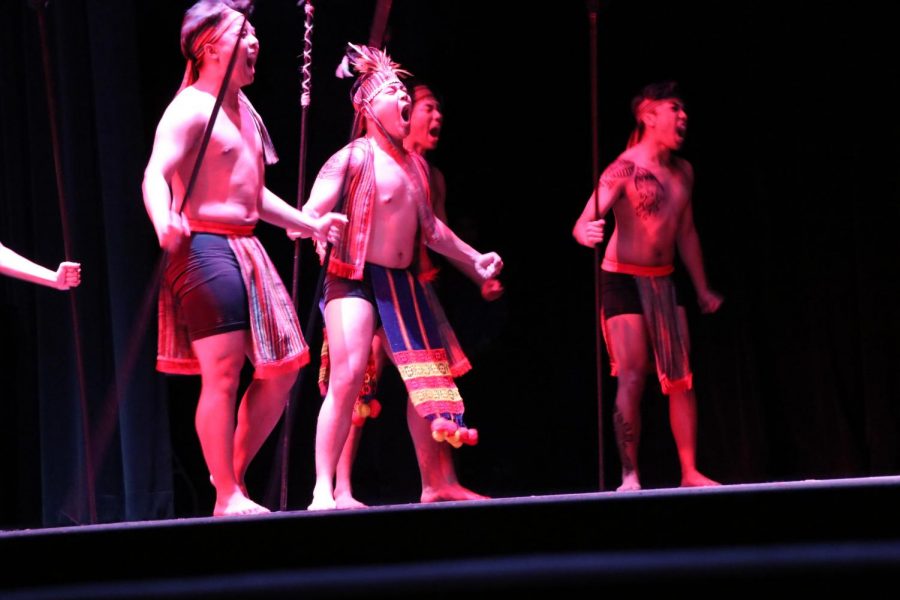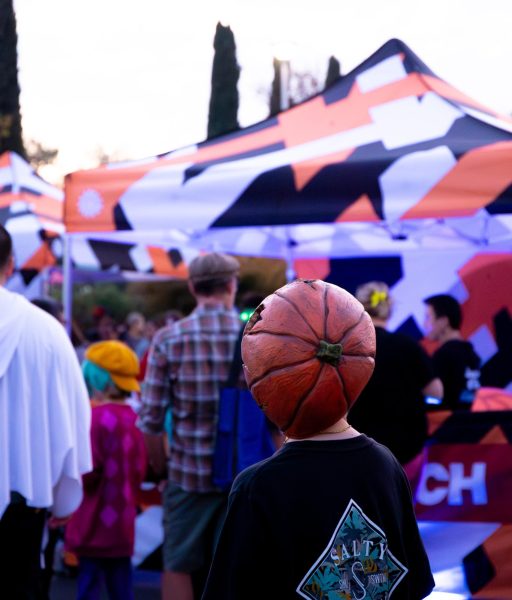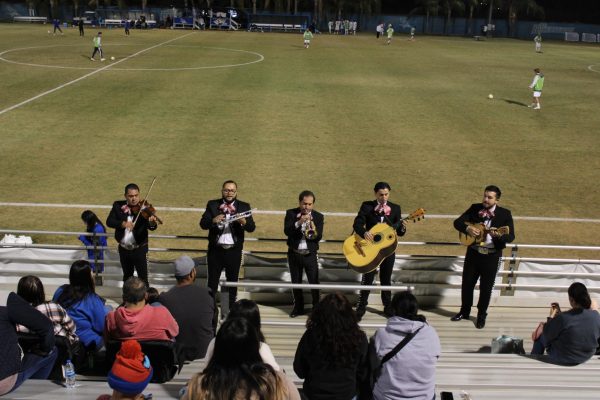Pilipino culture celebrates with ritual dances, entertainment
April 17, 2019
CSU Bakersfield was host to a night full of impactful performances from scenes depicting issues like family and identity to dance performances that offered a sneak peek into Filipino culture. All this occurred on April 5 in the Kaibigan the Pilipino-American Student Association’s first ever Pilipino Cultural Night in the Dore Theatre.
President of Kaibigan-Paso, Shaun Urbano, said the event was a way to bring culture back to CSUB stating that he had grown up in Delano where Filipino culture was very rich. He also stated how he felt that the event would allow them to bring more fun to CSUB.
The night began with an improvised pre-show featuring a few singing performances as the audience settled in. Some of these performances included songs like “Best Part” by Daniel Caeser and “I Won’t Give Up,” by Jason Mraz.
The beginning of the show commenced as President Urbano opened up the event by telling the audience of the event’s intentions to give a voice to their members. Urbano also offered advice.
“Without your roots, you wouldn’t be able to grow,” he said.
Two others came on stage to tell of the struggles that all the cast has faced from juggling responsibilities to bring the performance and commending them for doing so.
One of the two, Ben Perlado, director of admissions for CSUB, spoke of how the cultural club, Kaibigan gave students a chance to network and “build a sense of community.”
The show then had everyone standing up to the “Star Spangled Banner” and Lupang Hinerang sang the national anthems of the United States and the Philippines.
Then the acting scenes of the play began. These scenes depicted many parts of Filipino culture.
CSUB student Danielle Allen said it was about Filipino culture and family life using both English and Tagalog.
This play also embraced some of the stereotypes that are attached to Filipino’s and using the play as an outlet to free themselves of them.
Urbano said that there was a little stereotype “about Filipino parents nagging so much about being a nurse,” and that is a big issue because it can be hard to grow with that pressure. That is why Urbano felt like Kaibigan and events like this can help them “be as free as they can be.”
However, for some students there was a lot of visual interest in the many dance scenes that happened in between scenes. Dance scenes ranged from cultural dances to modern dance. All cultural dances had their background explained before each dance took place.
These dances included Janggay, also described as the bird dance, a dance brought by Filipino’s Malay ancestors that uses long fingernails extensions to represent bird claws.
CSUB student Jasneet Kaur said how interesting she found the eagle dance.
This tribal dance is formally known as Binaylan and is one of the four movements of the eagle and features intricate movements using red ribbons.
There was also a lot of interest in the Idaw dance, a Bontoc dance, that is meant to portray warriors during war time. This dance features male dancers wearing bahag, which were the traditional clothing of the Cordillera.
Kaur was struck by the depiction of war cries and “people dying” and war cries made the performance stand out to her.
Then there was the Carinosa, the dance that imitates acts of flirtation as two partners with the use of fans by one and handkerchiefs for the other. Following that, the Pagapir dance was a dance performed by women of the royal court to show good manners as they dance with fans.
The finale of the show was the Tinikling dance that came about in the Spanish colonial era, and showcased dancers as they danced in and out of spaces separated by logs.
Allen and Kaur described the show as “energetic exciting, and colorful.”
Urbano said this event will come back next year, and it will be even better than this year.







